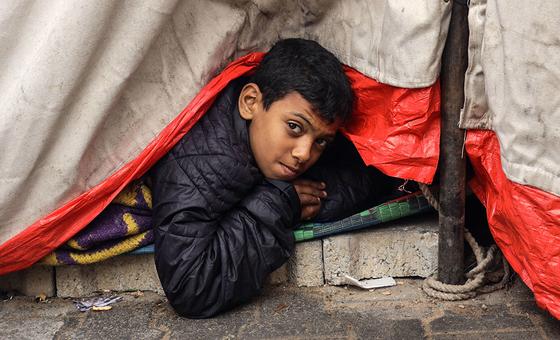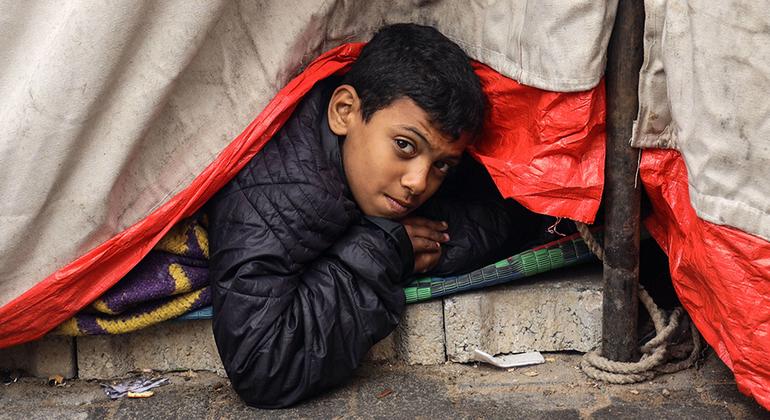
Echoing those concerns, UN Secretary-General António Guterres warned in a tweet on X that in addition to the threat of being killed, Gazans faced a growing risk of disease, just as health services were collapsing.
Only 16 out of 36 hospitals “are even partly functional”, Mr. Guterres said.
In another post on social media, UN emergency relief chief Martin Griffiths said on Tuesday that there had been “no let-up in the atrocities inflicted inGaza since 7 October when Israeli bombardment began in response to Hamas-led attacks in Israel that left some 1,200 dead and approximately 250 taken hostage.
More than 25,000 people have been reportedly killed “including two mothers every hour”, Mr. Griffiths said, citing data from the Gaza health authority, while hospitals continue to be “overcrowded, besieged and under fire; homes have been reduced to rubble…places of safety have become places of danger”.
Survival instinct
Reporting continuing “massive displacement” southwards from the Khan Younis area in response to intensified fighting since the start of the week, the UN agency for Palestinian refugees (UNRWA) said the new arrivals had now set up large plastic tents along the border fence separating Rafah in southern Gaza from Egypt.
In its latest situation update, UN aid coordination office OCHA said that escalating hostilities in the Khan Younis area on Monday had left dozens dead.
“The situation in general is deteriorating dramatically,” said UNRWA spokesperson Adnan Abu Hasna. He noted that Rafah city was now home to 1.3 million people and “absolutely unable to cope” with such an influx, witnessed in person in Rafah on Tuesday by top officials Sigrid Kaag, the UN Senior Humanitarian and Reconstruction Coordinator for Gaza, and Jamie McGoldrick, interim Humanitarian Coordinator for the Occupied Palestinian Territory.
Meningitis threat
Diseases such as meningitis and hepatitis C are spreading along with a doubling of the number of people with intestinal and skin diseases that threaten to push health services to breaking point, UNRWA’s Mr. Hasna warned, adding that far more humanitarian relief needed to enter the Strip where “everyone is at risk…whether in Khan Younis or in Rafah.
“There is absolutely no safe place, but we think that pushing more Palestinian residents to Rafah city is pushing things towards explosion.”
Education at a standstill
In a tweet on X on Wednesday – the International Day of Education – the UN agency reported that all of its schools in Gaza remain closed and most are home to displaced Palestinians – more than 1.2 million, in all.
At least 340 internally displaced people have now been killed while seeking safety in UNRWA shelters with more than 1,100 injured, it said.
Three in four school buildings across the Strip have also sustained damage along with numerous institutions of higher education, UNWRA continued, noting that attacks on educational facilities and UN premises “violate international humanitarian law”.
Since the start of the war, more than 625,000 students and 22,564 teachers in the enclave “have been deprived of education and a safe place for over three months”, UNRWA continued.
And as rocket fire continues to be reported from Gaza into Israel, the UN agency noted that “thousands of learners and education personnel” were among those killed.
In the West Bank, “escalating violence” has also disrupted access to lessons, UNRWA said, before repeating its call for an end to the conflict.



